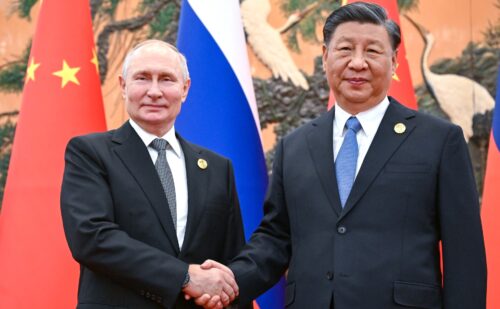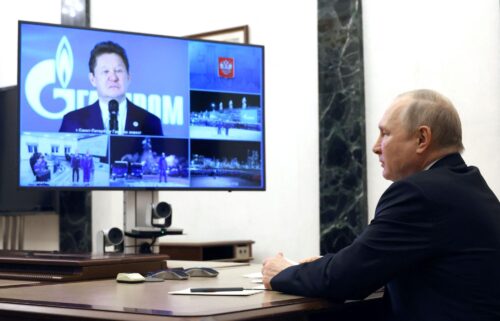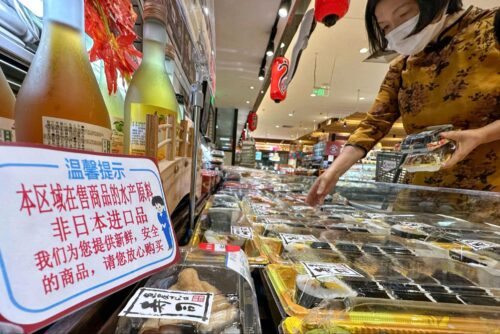A new type of Chinese free trade port for Hainan?


The Boao Forum for Asia (博鳌亚洲论坛 bó’áo yàzhōu lùntán) is an annual meeting of powerful people at Bo’ao on Hainan Island, and this year it is scheduled for April 8 to 11. It was founded in 2001 and modeled on the World Economic Forum at Davos. Xi Jinping has attended Bo’ao twice as Party secretary and once in 2010 before his appointment as top leader.
Chinese foreign minister Wang Yi 王毅 today said that Xi’s keynote speech at Bo’ao “would be ‘the most authoritative interpretation’ of the new measures planned to mark the 40th anniversary of China’s move towards economic liberalization,” according to the South China Morning Post. So we can expect some serious pageantry if not any really interesting news. The SCMP suggests that the establishment of a new type of free-trade port will be “one of the major announcements.”
- Xi proposed plans for new free-trade ports last October, says a source of the SCMP, noting that the new ports “would enjoy much greater freedom in terms of policymaking than existing free-trade zones and be more open in terms of market access.”
- “The openness [at the new ports] will be much higher than at the Shanghai Free Trade Zone…and even higher than in Hong Kong,” said a second source to the SCMP.
- Hainan itself might be the first new free-trade port, suggests the SCMP. This makes sense: The province has always been a zone for economic experimentation, and being an island, it is conveniently containable if things go wrong.
Whatever Xi announces, it’s bound to be quite a show. But for the meantime, color me skeptical on just how free these free trade ports will be. I will be delighted to visit Hainan in a few years time to check. Even if the free trade port does not come about, the island has China’s best surfing.
Rumblings from the trade war
As we were preparing this newsletter for publication, the U.S. Trade Representative released its expected list of products imported from China that it wants to tax. The Financial Times says (paywall) that the document shows that the Trump Administration intends to “within weeks begin imposing a 25 per cent tariff on 1,333 products from China ranging from industrial robots and electric cars to locomotives, jet engines and snowblowers in retaliation for what it says has been decades of state-backed intellectual property theft by Beijing.”
Earlier in the day, media reported that global stock markets have the jitters, and various outlets have examined different industries that may experience pain on both sides of the Pacific:
- The stock markets are jittery: The New York Times says (paywall) that “stock markets have plummeted” while firms “like General Electric and Goldman Sachs, as well as agricultural companies, have lodged objections with the White House.”
- “The U.S. wine industry has expressed concerns over the long-term damage of China’s 15 percent tariff on imported wines from the United States,” according to Xinhua News Agency.
- Australian wine and fruit exporters might benefit from a U.S.-China trade war, predicts NPR; New Zealand and France may also enjoy tariffs on American wine and food products.
- “We will certainly take countermeasures of the same proportion and of the same scale, same intensity,” said Chinese Ambassador to the U.S. Cui Tiankai 崔天凯, reports CNN.
The endgame for Trump, “according to one of his former advisers, is for China to fulfil pledges spelt out in China 2030, which was written jointly by the World Bank, China’s Ministry of Finance, and the Development Research Centre of the State Council,” reports the South China Morning Post. China 2030 calls for deep, World Bank-friendly reforms of the country’s economy.
China 2030 was published in 2013, in the early days of Xi Jinping’s rule. It’s the product of a very different time and political environment. It’s best seen in the context of contemporary documents, such as the essay published in late 2012 by former deputy editor of the Central Party School’s journal, Deng Yuwen 邓聿文: The ten grave problems facing China.
China 2030 has not been in the news much lately, but we’ve heard an awful lot about the Xi Jinping-endorsed Made in China 2025, which Lorand Laskai of the Council on Foreign Relations calls “China’s grand plan to bolster hi-tech industries at home” in this piece: Why does everyone hate Made in China 2025?
I can’t imagine a document like China 2030 being produced now. Made in China 2025 gives a much more accurate guide to how China will actually behave.
Three things
- A newly published book, Shenzhen Zen — “An accidental anthropologist’s decade of life, love, and misadventure in the Middle Kingdom” — earned this praise from Foreign Policy Asia editor James Palmer: “Justin Mitchell’s diary of his years in China transcends the usual expat memoir to give us something far funnier, more poignant, and sometimes tragic. This isn’t Mitchell’s story, but a window into the lives of men and women — especially women — in a time when China’s breakneck change often left casualties in its wake.” The China Project has published one of the anecdotes in the book: I was asked to teach English at a Chinese orgy.
- Veteran China business hand David Wolf was on a train in Zhejiang and saw “countless bulldozers, skip-loaders, graders, road surfacing machines, and dump trucks,” all of them idle and “parked in lots beneath railway viaducts overgrown with weeds.” In this blog post, he examines where construction equipment goes when it dies in China.
- Europe should hijack the Belt and Road this is one of the provocative ideas in this interview on The China Road with Bruno Maçães, former Portuguese Secretary of State for European Affairs, and author of The Dawn of Eurasia. He argues that Europe needs “to make sure… that the Belt and Road turns out to be something that China didn’t quite envision,” in other words that influencing the development of Belt and Road and China’s global citizenship is a better strategy than attempting to stymy it. (If you’ve been living under a rock, here’s our primer on Belt and Road.)






